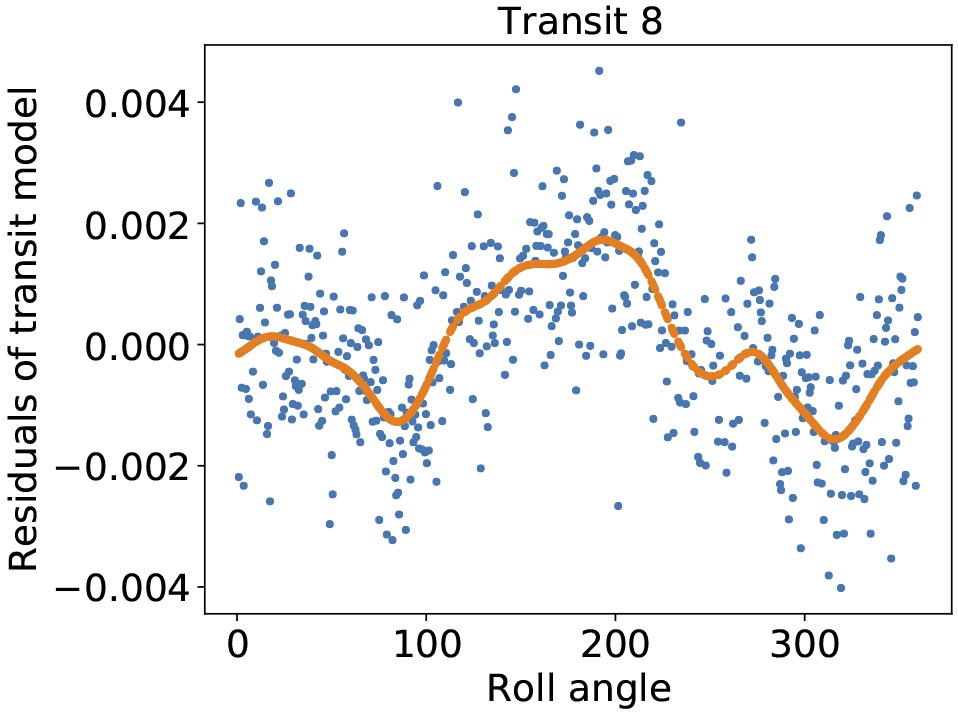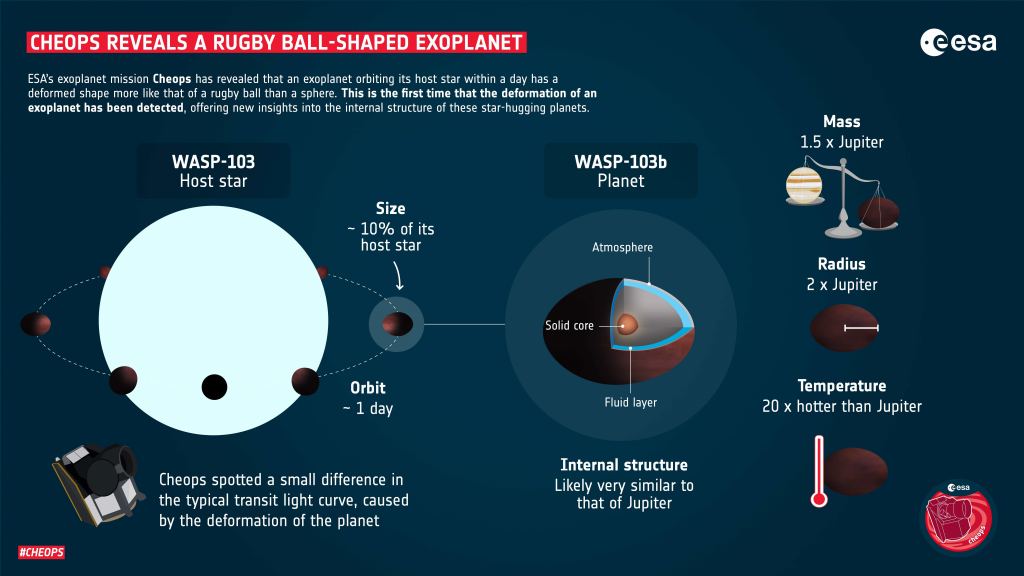Among the thousands of known exoplanets, there are some that are very odd. Take, for example, the exoplanet known as WASP-103b. It’s a large planet with a mass about 1.5 times that of Jupiter, but 103b is so close to its star it makes a complete orbit every 22 hours. At this proximity, many astronomers wonder if the world is on the edge of being ripped apart by tidal forces. But a new study shows us that something much more interesting is going on.
WASP-103b was discovered by the transit method. Every time the planet passes between us and its star, we observe a little dip in the star’s brightness. The shape of that dip over time, known as a light curve, can tell us about the size and shape of the planet. So the team made detailed observations of several transits using the CHEOPS space telescope. They combined their observations with data from the Hubble and Spitzer space telescopes to determine the size and shape of the planet.
 Light curve for a transit of WASP-103b. Credit: Barros, et al
Light curve for a transit of WASP-103b. Credit: Barros, et al
They found that WASP-103b isn’t spherical, or even rotationally flattened a bit like Jupiter. Instead, the world is tidally deformed. It’s squished by the tidal forces of its star into a shape roughly like that of a rugby ball. Determining this shape just from the light curve is a significant achievement, but knowing the shape of 103b also tells us about its composition, through something known as its Love numbers.
The Love numbers were first derived by Augustus Love for Earth in 1909. Imagine squishing something like a tennis ball in your hand. If the ball is stiff, you have to squeeze harder to make it deform. If it’s more elastic, the same force will deform the ball much more. Love showed that you can compare the forces applied to Earth with the nonspherical shape of Earth to determine the rigidity of our world. You can do this with other planets as well, including WASP-103b.
 Measuring the size and shape of WASP-103b. Credit: ESA
Measuring the size and shape of WASP-103b. Credit: ESA
From the Love numbers, the team determined WASP-103b has a rigidity similar to that of Jupiter. But because it’s 50% more massive than Jupiter, we would expect it to be more rigid. So 103b must be inflated a bit, possibly through being strongly heated by its star.
Because this planet orbits so close to its star, we would expect its orbit to be gradually decaying. The tidal forces should be causing the world to move ever so closer to the star with each orbit. But this doesn’t seem to be happening. In fact, observations by the team show that its orbital period seems to be increasing, which suggests the planet is actually moving away from its star. It’s not clear why this is, but it could be due to another planet, or that it’s in a varying elliptical orbit.
Future observations by telescopes such as the James Webb Space Telescope will be even more precise and should allow us to resolve this mystery. They should also help us better understand the composition “hot Jupiters,” which are very common in planetary systems.
Reference: Barros, S. C. C., et al. “Detection of the tidal deformation of WASP-103b at 3-sigma with CHEOPS.” Astronomy & Astrophysics 657 (2022): A52.
Reference: Love, Augustus Edward Hough. “The yielding of the Earth to disturbing forces.” Proceedings of the Royal Society of London. Series A, Containing Papers of a Mathematical and Physical Character 82.551 (1909): 73-88.

